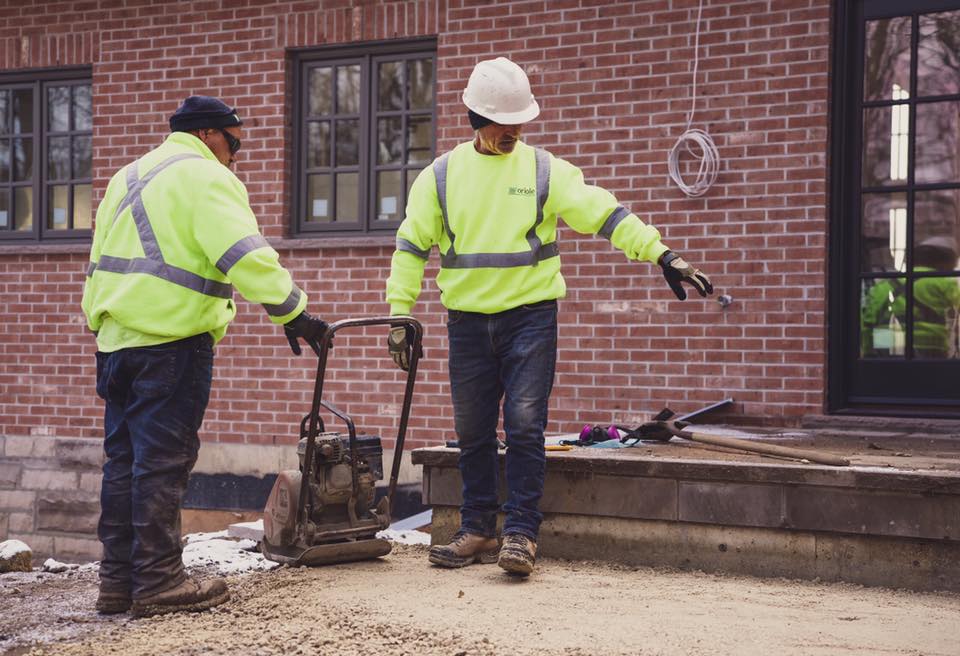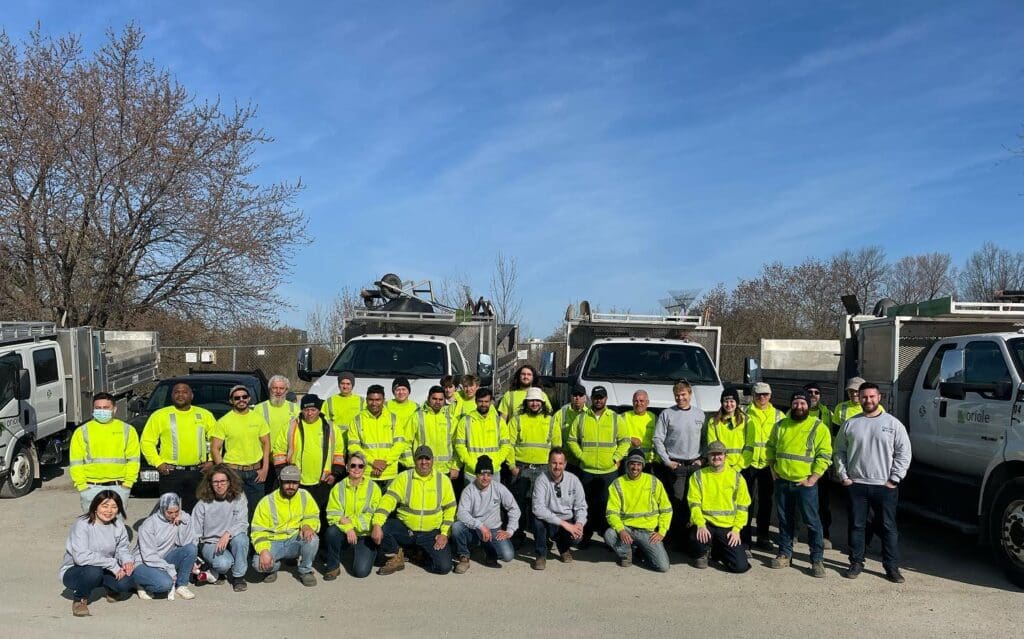
As your landscape company’s operations grow, one of the questions that will arise is if it is time to bring some of your services in-house.
Starting out, it makes sense to subcontract others for specialties you aren’t particularly well-versed in or simply don’t have enough work to support throughout the season. Yet bringing your trades in-house can reap multiple benefits.
Peter Guinane, CEO and co-founder of Oriole Landscaping Ltd., based in Toronto, Canada, says he brought on his first tradesperson in 1994 – a carpenter and a stonemason later that same year. He started the company in 1986 and had subcontracted up until then.
“We were still pretty small in ’94,” Guinane says. “But we hired these two guys, and actually, the stonemason is still working for me. He celebrated 30 years this year and the carpenter, he retired two years ago.”
Now, Oriole Landscaping has professional stonemasons, carpenters and an in-house mechanic who does welding for the company.
The Benefits of Bringing Trades In-House
Guinane says his main motivation for bringing the trades in-house was to have better control of the means of production.
“We have projects that need a gate, a pergola, a deck or whatever built, and we’re begging the trade to come,” Guinane says. “We don’t know when they’re coming. They’ve got another job they have to be at. We can’t promise the customer a realistic timeframe because we’re at the mercy of these tradespeople who are very good at the trade but maybe not so good at scheduling.”

Photo: Oriole Landscaping
Guinane says not all of the benefits of in-house trades will show up on paper as you gain better control of your schedule and production.
“If your client is happier because the project went more smoothly, that is as good as money on your bottom line,” Guinane says.
While you might assume subcontracting is cheaper as you do not have to add another full-time employee to your staff, Guinane says it’s been less expensive for them to have their trades in-house.
“If you’re hiring a subcontracted crew, and they’re paying their staff benefits, I guarantee you you’re paying the benefits,” Guinane says. “That company is charging you for all of those costs, plus some margin for error, plus a profit margin. So you’re paying all of those costs. You can just hire them directly.”
Another benefit of having in-house trades is it can help lure new staff to your company.
“When I have a certified stonemason or certified carpenter on staff and even my mechanic who does welding, I have staff that are like, ‘Can I work with them to learn how to do welding?’” Guinane says. “There’s a good chance I wouldn’t have attracted those staff if I didn’t have the professionals that they could work under.”
Guinane adds that from a marketing standpoint, having your trades in-house can also keep work coming to your company. If a person sees a crew working on some stonework or a deck, they’re most likely to call the name on the side of the truck parked out front.
“They will ask the crew, ‘Oh, can I get your card because I want to do something similar at my place,’” Guinane says. “If your card is the one that the crew is handing out, you have an opportunity to get more work. If it’s their own card they’re handing out, you might lose the connection to that job.”
The Drawbacks of In-House Trades
Bringing your trades in-house does carry some risks with the main one being unbillable hours.
“We run the risk of having to carry them when we don’t have a lot of carpentry work or custom trade work,” Guinane says. “We have to make sure we keep them busy.”
When things are slower, Guinane will have his stone masons do concrete base work and help prep the base and pour concrete.
“We can grow their scope or narrow their scope depending on how busy we are,” Guinane says.
“I haven’t had a problem keeping them all busy.”
Guinane says if business is slow or you have inconsistent work for tradespeople, it can be very expensive to carry an employee who isn’t versatile enough to do general work. This is why they still opt to subcontract their swimming pool and irrigation work.
Guinane says that if you’re doing $500,000 worth of irrigation work every year, you can afford to have your own truck, crew and inventory. Oriole doesn’t have enough of this work to justify a crew. Guinane adds his irrigation subcontractor is very reliable and responsive in handling any problems that come up on a customer’s site.
Also, it’s important to not put all your eggs in one basket. If you have only one carpenter or stonemason, you’ll have no one to complete that type of work if they’re out sick, decide to move or quit. Guinane says you might have to hire a subcontractor without properly vetting them or have to onboard a new hire quickly.
Guinane has made sure all of his trades have apprentices who can step up and do most of the work if one of his tradespeople is out sick or on vacation.
Advice for Others
When looking for your first tradespeople to bring in-house, Guinane advises seeking out skilled individuals, particularly small business owners who are looking to get away from the admin side of things.
“It is enticing to come work for a larger company where you can have consistent work benefits,” Guinane says. “You don’t have to do any paperwork at night when you go home. That has attracted a lot of the skilled trades that we have.”

Part of the way Guinane ensures he isn’t struggling to find skilled tradespeople is by constantly building leaders. Everyone in the company is expected to be upskilling continuously.
Guinane stresses that once you have skilled tradespeople in-house, you need to make sure you retain them, as they are hard to come by.
“They do want consistency,” Guinane says. “They want to make a good living wage, and it’s expensive to live in the city. They have to make decent money, and some of them make close to six figures.”
He says they offer benefits and strive for a positive work environment with support and training. He says doing high-end, high-quality projects is also beneficial as it’s more interesting than cookie-cutter work.
“I can guarantee you if I couldn’t give them consistent work, they would have to leave,” Guinane says.
Guinane says bringing your trades in-house has to be worth your while. Do your calculations like you would when purchasing a piece of equipment so you know how much you’re spending and when they will start making you money.
“If you’re spending half a million dollars subcontracting your deck work to a carpentry crew, you could contemplate bringing that in-house because you can have a good crew set up with a truck and crew leader and laborers,” Guinane says. “You can have better control over your schedule and have better control over the quality and consistency.”

